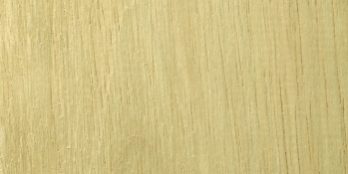Rubberwood vs Solid Wood: Understanding the Differences
When considering wood options for various applications, the choice often comes down to Rubberwood and Solid Wood. While both are popular choices in Malaysia, they have distinct characteristics that make them suitable for different purposes. Here’s a comprehensive guide to help you understand the key differences and their applications.
What is Rubberwood?
Rubberwood, also known as Parawood or Hevea brasiliensis, is a light-colored, medium-density hardwood derived from the rubber tree. It is widely recognized for its versatility and is a sustainable choice for furniture and cabinetry.
- Origin: Rubberwood is predominantly grown in tropical regions, including Malaysia, where the rubber tree thrives in low-altitude environments.
- Features: Rubberwood is real hardwood, valued for its eco-friendliness as it comes from trees that no longer produce latex after about 25–30 years of growth.
What is Solid Wood?
Solid wood refers to a wide variety of wood species, each offering unique qualities. Solid wood is divided into two main types: Hardwood and Softwood.
- Hardwood: Comes from deciduous trees, known for their strength and durability. Examples include mahogany, oak, and walnut.
- Softwood: Derived from coniferous trees, often lighter and easier to work with, such as pine and cedar.
Key Differences Between Rubberwood and Solid Wood
- Strength and Usage
- Rubberwood: Suitable for interior applications such as furniture, cabinetry, and cutting boards. It is not ideal for exterior purposes due to its vulnerability to moisture.
- Solid Wood: Depending on the species, solid wood can be used for both interior and exterior applications, including construction, flooring, and decking.
- Workability
- Rubberwood: Easy to work with, thanks to its low density and straight grain. However, proper drying is essential to prevent twisting.
- Solid Wood: Workability varies by species. Softwoods like pine and cedar are easier to handle, while hardwoods like teak and ebony require more effort.
- Durability and Resistance
- Rubberwood: Not naturally resistant to rot or insects, requiring treatment for outdoor use.
- Solid Wood: Some species, such as teak and redwood, offer excellent natural resistance to decay and pests.
Applications
- Rubberwood:
Ideal for furniture, cabinetry, interior millwork, moldings, cutting boards, and DIY crafts.
- Solid Wood:
Used for construction, furniture, cabinetry, flooring, decking, boat-building, and more.
Key Characteristics
Rubberwood:
- Scientific Name: Hevea brasiliensis
- Tree Size: 50–100 ft tall, 1–3 ft trunk diameter
- Average Weight: 37 lbs/ft³ (595 kg/m³)
- Janka Hardness: 960 lbf (4,280 N)
Solid Wood:
The hardness and weight vary significantly among species. Examples:
- Teak: 1,000–1,150 lbf
- Ipe: 3,510 lbf
- Mahogany: 900 lbf
FAQs
Is Rubberwood Real Wood?
Yes, rubberwood is a genuine hardwood used in furniture and other applications, much like other solid woods. It is eco-friendly, as it repurposes rubber trees that have finished their latex production cycle.
Is Rubberwood Waterproof?
No, rubberwood is not naturally waterproof. While it can handle light moisture with proper finishing, it is unsuitable for prolonged water exposure.
Can Rubberwood Be Used for Flooring?
Yes, rubberwood can make excellent light-colored flooring. However, it requires proper finishing to protect against moisture and scratches.
Why Choose Creatimber Global Sdn Bhd?
At Creatimber Global Sdn Bhd, we pride ourselves on offering high-quality Malaysian wood products, including rubberwood and various solid wood species. Our commitment to sustainability and excellence ensures you get the best materials for your projects.
Visit us at www.creatimber.com.my to learn more about our range of wood products and services. Transform your vision with premium Malaysian wood solutions!






